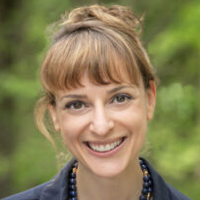Rebecca Jones is vice president of medical services at Imagen Technologies and clinical assistant professor of neuroscience in psychiatry at Weill Cornell Medicine in New York City.

Rebecca Jones
Vice president of medical services
Imagen Technologies
From this contributor
Review: ‘Uncommon Sense’ exquisitely explores autism’s sensory experiences
The play dexterously depicts the struggles — sensory and social — of four characters who occupy distinct places on the autism spectrum.

Review: ‘Uncommon Sense’ exquisitely explores autism’s sensory experiences
Explore more from The Transmitter
Snoozing dragons stir up ancient evidence of sleep’s dual nature
Deep-sleep cycling between brain waves of higher and lower amplitude dates far back on the evolutionary tree, according to a new comparative study of mammals and reptiles.
Snoozing dragons stir up ancient evidence of sleep’s dual nature
Deep-sleep cycling between brain waves of higher and lower amplitude dates far back on the evolutionary tree, according to a new comparative study of mammals and reptiles.
The Transmitter’s most-read neuroscience book excerpts of 2025
Books by Nachum Ulanovsky, Nicole Rust, and Andrew Iwaniuk and Georg Striedter made the list of some of the year's most engaging neuroscience titles.

The Transmitter’s most-read neuroscience book excerpts of 2025
Books by Nachum Ulanovsky, Nicole Rust, and Andrew Iwaniuk and Georg Striedter made the list of some of the year's most engaging neuroscience titles.
Neuroscience’s leaders, legacies and rising stars of 2025
Here are seven stories from the past year about some of the field’s most engaging figures.

Neuroscience’s leaders, legacies and rising stars of 2025
Here are seven stories from the past year about some of the field’s most engaging figures.